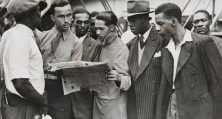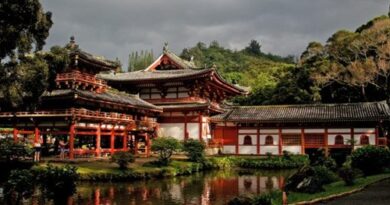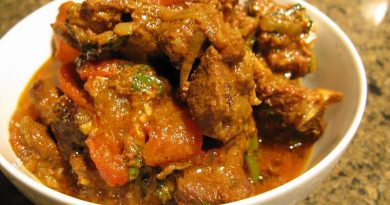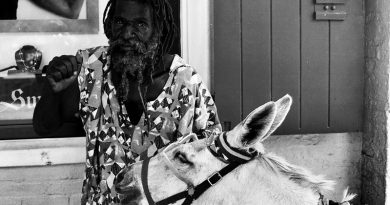The Jamaican Diaspora
The Jamaican Diaspora
The Jamaican diaspora is a very large one in proportion to its overall population. The Caribbean island nation has a population of 4.4 million. Its diaspora population is over 2 million. The population is generally isolated to a select few enclaves, with the United Kingdom having the largest population (800,000), followed by the United States (780,000) and Canada (300,000). While the population is present in other countries, it is not to a significant degree.
Britain’s Jamaican population is the largest in the world outside of Jamaica. This is due to the country’s former colonial ties. Indeed, Jamaica was one of Britain’s oldest and longest-lasting colonies, falling under British rule in 1655 until its independence in 1962. The island’s racial and cultural complexion shifted considerably during this period, the original Taino and Arawak populations becoming almost entirely replaced by sub-Saharan African slaves.
The ancestors of this group comprise well over 90% of the country’s population today and very much encompass the contemporary definition of ‘Jamaican’. The relationship between the two countries remains close despite cultural tensions often emerging. Jamaican immigration to the United Kingdom has occurred in some form since the beginnings of the island’s colonial subjugation by Britain but increased significantly at the onset of the 20th Century.
Indeed, a large number of Jamaicans fought in the First World War in the British West Indies Regiment, mainly in the East Africa Campaign and the Sinai and Palestine Campaign. The veterans of these conflicts often settled permanently in the United Kingdom after the end of the war. This marked the beginning of the country’s Jamaican community, although its population remained fairly stagnant until the mid-20th Century.
The Second World War was very much a major turning point for the United Kingdom’s Jamaican population. A wealth of different factors contributed to this. Firstly, a hurricane in 1944 left the island devastated, causing significant infrastructural damage whilst also eviscerating the country’s agricultural industry and leaving many dead. This coincided with a significant labour shortage in the United Kingdom caused by the Second World War. This resulted in a large wave of Jamaican immigration to the United Kingdom, where many gained employment in major national industries and services such as Transport for London and the National Health Service. This generation is often nicknamed the ‘Windrush Generation’, named for the HMT Empire Windrush, which arrived in the country in 1948 bringing a large number of immigrants seeking to begin new lives in the UK. Over 200,000 Jamaicans settled in the United Kingdom in the years following the Second World War, peaking in the 1950’s and 1960’s, remaining high in the following decades but at a reduced rate. Initially, the number of Jamaican migrants came from all social classes, but the demographics skewed heavily to the poorer migrants as the years progressed and Jamaica suffered a severe economic slump.
The Jamaican population has left a significant and widespread cultural imprint upon British society across a wealth of different areas. Jamaican cuisine is highly popular throughout the country, as is Jamaican music, which has been enormously influential on the evolution of British music. Reggae, ska and rocksteady are genres that are highly popular in Britain and the country has produced a large number of musicians in these genres. A large number of British athletes are of Jamaican descent including short-distance runner Linford Christie and footballers Raheem Sterling and Darren Bent.
Despite this cultural success, the Jamaican population has experienced a number of difficulties in its assimilation. Notably in the form of mistreatment by the police and systemic racism. This has led to a number of flashpoint over the past few decades. Notable flare-ups include the 1958 Notting Hill Race Riots, the Murder of Stephen Lawrence and the 2005 Birmingham Race Riots. Most recently, the ‘Windrush Scandal’ in 2018 saw over 60 people of Caribbean descent wrongly detained and threatened with deportation. Incidents such as these make it clear that the Jamaican (and the wider Caribbean) community continue to suffer issues of racial oppression. Despite the massive cultural impact of the Jamaican community on the UK-one only needs to look at the immense popularity of the Notting Hill Carnival to ascertain this-there are still a number of issues that are yet to be resolved. Demographically, the population is heavily centred in London, which is home to over 250,000 Jamaican people. Other major communities include Birmingham (35,000), Bristol (20,000), Nottingham (12,000) and Manchester (10,000). London is very much the hub of the Jamaican community, with major enclaves existing in East London boroughs such as Hackney and Haringey.
The United States’ Jamaican community, while similar to that of the United Kingdom in terms of size, is less significant in terms of overall cultural impact. Despite this, the East Coast has a sizeable Jamaican community, particularly centred around New York City. Jamaican immigration to the United States has its roots traced back to the early 19th Century when the slave trade was still thriving and the sugar industry was in need of large quantities of labour. As a result a large number of Jamaicans were recruited to plantations, with some staying on following the abolition of slavery. Jamaicans, along with immigrants from other Caribbean territories were often recruited to fill in labour vacancies in the wake of major conflicts, such as World War One and World War Two. The community did not develop significantly until the Civil Rights Movement of the 1960’s. The United States was a major source of emigration due to its geographical proximity and the wealth of economic opportunities there. New York remains the main hub with over 300,000. Florida, due to its close proximity also has a substantial population with 246,000.
Canada’s Jamaican community is also very significant. This is due to a combination of geographical proximity, economic benefit and the two countries’ shared colonial history. The community is predominantly based in Toronto, which has a Jamaican community of over 200,000. Jamaican cultural influence on the city is clear with its cuisine and music both hugely influential. Caribbean culture is celebrated with the annual Caribana event, which is a major festive event, bringing in an average of 1.3 million visitors.
The Jamaican diaspora, while not one of the most widespread diasporas in the world, is nonetheless hugely impactful. Jamaican culture, through its music, cuisine and festivals, can be felt throughout the world where there aren’t large populations. Where the diasporas are present, the impact is undeniably clear, the culture playing a major role in the various region’s multicultural identities.
Main image: The Windrush Generation.






